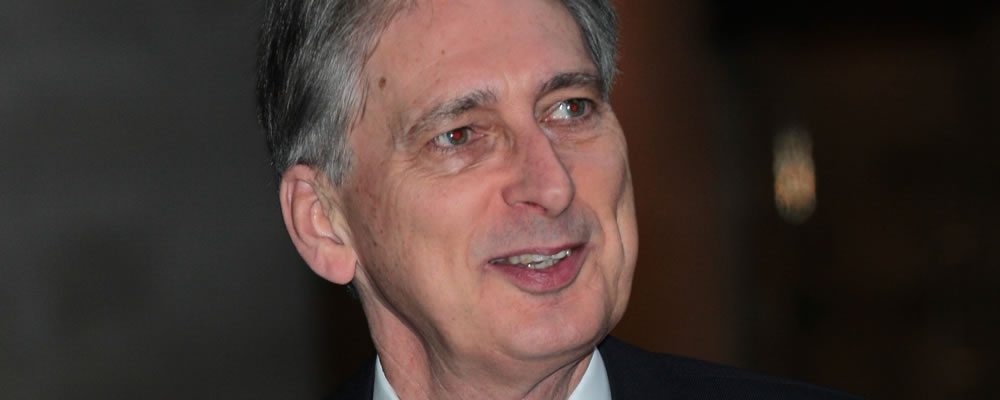- GBP EUR Exchange Rate Trends Around 1.12 – Unable to hold 1.13 highs
- UK Growth Forecast Cut – Eurozone confidence beats expectations
- GBP Forecast: UK GDP Projection Ahead – Disappointing data could drag down Pound
- EUR Forecast: Eurozone PMIs in Focus – Could weaken the Euro if they disappoint
Wednesday was a pretty big day for UK fiscal policy news, but in the end the UK Autumn Budget speech from Chancellor Philip Hammond had little notable impact on the GBP EUR exchange rate outlook. The Euro was supported by some strong Eurozone confidence data.
GBP EUR began the week trending at the level of 1.1205 and briefly touched on a high of 1.1304 on Tuesday. Since then the pair has slipped slightly but continues to trend above the level of 1.1250.
Pound (GBP) Strength Limited after UK Growth Revised Lower
Wednesday’s UK Autumn Budget presentation from UK Chancellor Philip Hammond saw little in the way of surprises, and ended with few key takeaways for Pound investors.
Sterling was supported by news that the UK government would be supplying an additional £3bn for Brexit preparations and potential contingency plans over the coming two years.
This was announced to help the government prepare for ‘every possible outcome’, and helped to reassure investors that Britain could avoid the worst-possible ‘cliff-edge’ scenario even if UK-EU negotiations fall through.
This news may have placated pro-Brexit members of the UK government and could also help to limit further clashes over the direction Brexit negotiations are taking.
Overall, Sterling traders are more optimistic about the Brexit process this week but concerns about Britain’s economy remain.
Chancellor Hammond avoided risks in the Budget presentation and his proposals for UK consumers were limited, meaning some analysts are unconvinced that consumer activity will improve.
Citing poor productivity, Hammond also confirmed that the independent Office for Budget Responsibility (OBR) had significantly cut its UK growth forecasts.
The group initially forecast 2017 to see 2% growth back in March, but 2017 growth is now forecast to come in at just 1.5%. This was even lower than many analysts had anticipated.
The OBR also forecasts that UK growth will slow to just 1.3% by 2020 and rise to 1.5% in 2021, but on top of this the group notes that the Brexit remains a highly uncertain factor. According to the OBR;
‘Given the uncertainty regarding how the Government will respond to the choices and tradeoffs it faces during the negotiations, we still have no meaningful basis on which to form a judgement as to their final outcome and upon which we can then condition our forecast.’
With Britain’s economy now predicted to continue to slow in the coming years, Sterling’s strength was limited, which helped the Euro to push GBP EUR lower on Wednesday afternoon.
Euro (EUR) Supported by Unexpectedly Strong Confidence Data
Ongoing political uncertainty in Germany has weighed on the Euro in recent sessions and has made it easier for GBP/EUR to sustain gains.
On Monday, it emerged that German Chancellor Angela Merkel had failed to secure a new coalition government, and that coalition negotiations had fallen through.
This made investors hesitant to keep buying the strong Euro, although for now markets remain confident that Merkel will remain in power and that Germany’s economic outlook will remain strong.
With markets generally calm on Germany’s political outlook for now, the shared currency benefitted from a much stronger than expected Eurozone consumer confidence report on Wednesday afternoon.
Eurozone consumer confidence was predicted to improve from -1 to -0.8 in November. However, the November projection came in with a surprising positive figure of 0.1.
This was the highest Eurozone consumer confidence figure in almost 17 years – the first positive confidence figure at all since January 2001.
As investors were pleasantly surprised by the report, the Euro pushed GBP EUR down from its highs.
GBP EUR Exchange Rate Forecast: Growth Data in Focus
With the Office for Budget Responsibility (OBR) predicting a slowing in UK growth over the next few years, it would take a much stronger than expected UK growth rate projection on Thursday to notably boost the Pound outlook.
Britain’s second Q3 Gross Domestic Product (GDP) projections are expected to remain the same as the first projections, with 0.3% quarter-on-quarter and 1.5% year-on-year.
If they come in lower than expected, Sterling could weaken and the GBP EUR exchange rate would shed more of its recent gains.
Euro investors, on the other hand, will keep an eye out for any potential developments in Germany’s political situation. Key Eurozone data could also influence Euro trade on Thursday.
Germany’s final Q3 growth results will be published, and Markit will publish its November PMI projections for the bloc too.
Markit’s PMIs are expected to remain strong, with the overall composite PMI predicted to come in at 56 again. If they beat expectations, the Euro could strengthen.
GBP EUR Interbank Rate
At the time of writing this article, the GBP EUR exchange rate trended in the region of 1.1255. The Euro to Pound exchange rate traded at around 0.8882.



